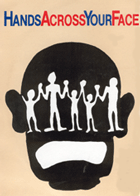Here is a fascinating story from The Boston Globe–a kind of story that I don’t see much of in contemporary newspapers. It tells of one Ma Zumei and the revival of the artform of which she is a master–storytelling:
Zumei, a traditional Chinese storyteller, performs in the pingshu style
common in China’s northern provinces, where the storyteller’s stylized,
high-pitched voice, accompanied by folk instruments, alternates between
passages of prose and rhymed metrical verse. As Zumei whispers her
first words, accompanied by a young man playing a three-stringed
instrument called the san xian, giggles burst from the younger people
and foreigners in the audience. Her shrill voice, cascading tones, and
exaggerated gestures are a far cry from the saccharine smoothness of
modern popular music. But before long, the audience is laughing and
applauding enthusiastically.
As the correspondent suggests, storytelling was a traditional and popular artform in China, and in other parts of the world–a world before the days of the internet, Hollywood, television, radio, etc. It also served as a means of socio-political critique, among other things:
Storytellers figured prominently in China’s popular culture for
centuries, finding rich material in the country’s intricate myths and
history. Like the minstrels of Europe, the storytellers preserved
ageless tales, taught religion, entertained listeners with bawdy jokes,
and engaged in political protest, often with a wry subtlety that
infuriated local mandarins, who feared that teahouses, where men spent
hours in bamboo chairs sipping tea, playing games or cards, and
conducting business transactions, were hotbeds of dissent.
However,
storytelling was outlawed during the Cultural Revolution and was only
gradually revived as a political tool of the state.
By the mid-1960s, when Mao’s Cultural Revolution was in full fury,
the art was totally banned, Zumei says. Many storytellers were killed
or sent to reeducation camps, and all the teahouses and theaters where
they had performed were closed. ‘’In the end," she says, ‘’only a
handful of us survived."The art would have died, but in the
early 1970s Communist leaders wanting to stir national sentiments
co-opted the form to spread Communist ideas. ‘’We were made to sing
good Communist songs," says another storyteller, Chen Xiu Min, 44, who
first began storytelling in the only place one could during Maoist
years - in a traveling troupe of the People’s Liberation Army that
performed patriotic skits for soldiers. ‘’Suddenly new stories were
written for us…like paeans to the beauty of Mongolia which inculcated
a love within common people for disputed territories."
Now,
the artform is revived and is achieving growing popularity. However,
the revival of storytelling is not simply, nor was it ever, a return to
the past, to tradition, because storytelling always involved the
application of mytho-historical motifs to contemporary realities:
This marriage of ancient tales with modern dilemmas and references
is essential to keeping storytelling relevant to audiences, Zumei said.
Of course, she added, storytellers have always responded to the times.Today,
however, most of the teahouse stories lack the biting satire of
previous generations. The Chinese government is an infamously
capricious censor, and storytellers, like other public performers and
writers, tend to self-censor their material.Zumei, for her part,
says she steers clear of particularly sensitive subjects, such as the
rising rural protests taking place all over China. She also admits
quite a few of her new jokes rely on slapstick and sex to tickle
audiences, and that the wit of the older stories is gone - along with
the days when people ambled into ramshackle teahouses to listen to
wandering storytellers.But, says Zumei, ‘’We will still have
made a difference." The stories ‘’are part of life here and in one form
or another they’ll last forever."

































